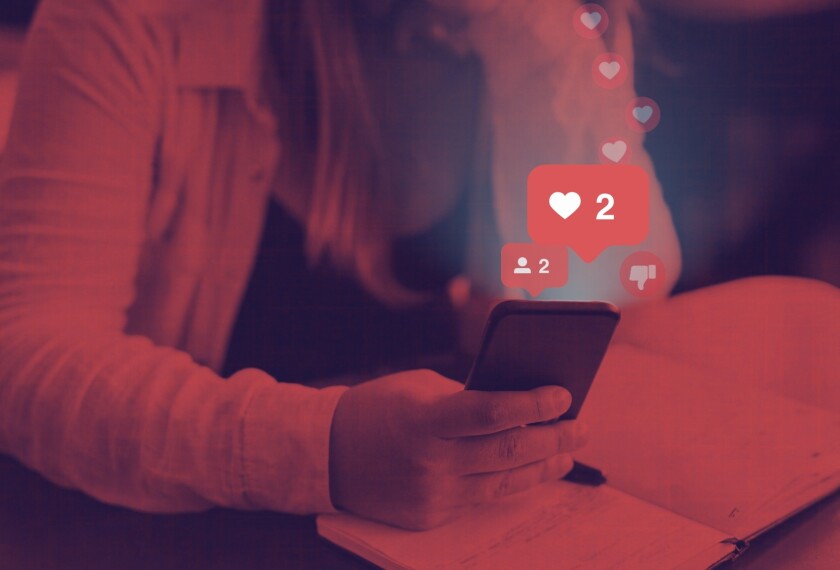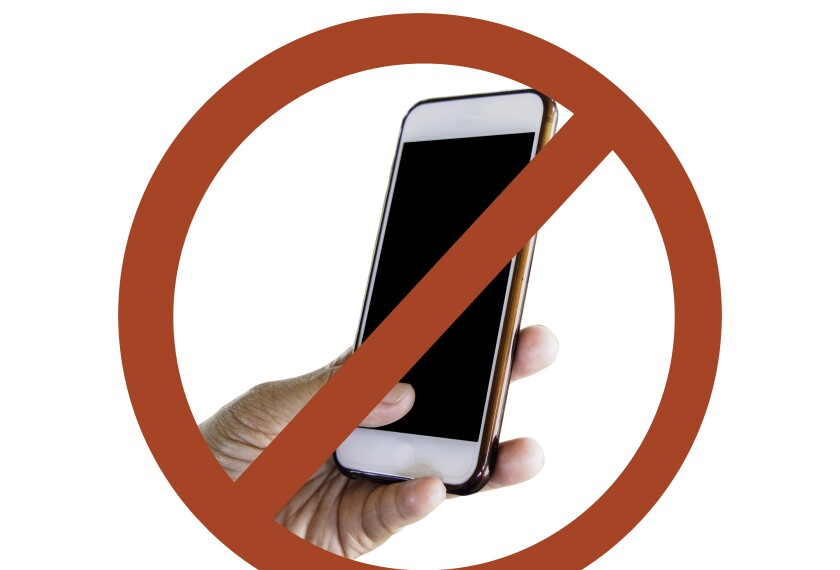Before Regina Slageâs Algebra I class begins, her Edgewater High School students have to drop their backpacks and phones off at the front of the room, only taking their school-issued laptops and other class materials to their desks.
Itâs Slageâs way of enforcing a statewide policy in Florida, signed into law in May, that prohibits studentsâ use of cellphones during instructional time.
âI donât know ... what went into making up that rule, but I can tell you that the result of it on a very wide scale has been extraordinarily positive for [studentsâ] mental health from an anecdotal perspective,â said Heather Kreider, the principal of Edgewater High School in Floridaâs Orange County school district.
âOur kids are way more engaged. The apathy that we had seen from them in the last year to two years has seemed to wane. They seem more like theyâre waking back up to a social experience.â
Beyond Florida, more schools across the country are restricting studentsâ use of smartphones in classrooms as concerns about their academic, social-emotional, and mental well-being increase. While a common motivation for schools to prohibit phone use has been to eliminate a source of distractions, another has been to help studentsâ mental health by reducing a source of stress and anxiety.
These restrictions can take a variety of forms. Some schools only limit studentsâ phone use during classroom time, allowing students to have phones out between classes and during lunch, while other schools prohibit phones all day.
Educators have found creative ways to separate students from their phones, from Slageâs requirement that students stash backpacks at the front of the room to the use of over-the-door shoe holders in classrooms where students place their phones. Some schools use technological solutions, such as Yondrâs pouches that lock until students tap them against a magnetic device on their way out the door.
More than three-quarters of schools, 76.9 percent, prohibited non-academic use of cellphones or smartphones during school hours during the 2019-20 school year, according to the most recent recent data from the National Center for Education Statistics, up from 70.3 percent in 2017-18.
As concerns have grown about adolescentsâ worsening mental health, much of the discussion has centered on teensâ constant use of their phones and social media. U.S. Surgeon General Vivek Murthy earlier this year said kids younger than 14 shouldnât use social media, and he later issued a public health advisory highlighting social mediaâs potential harms to young peopleâs mental health.
A growing number of studies have linked childrenâs use of smartphones and social media to their deteriorating mental health. For instance, found that screen time was associated with problems in teensâ mental well-being, and that social media was linked to an increased risk of depression in girls.
âThe rates of anxiety and depression being reported were already rising and have been since the â90s,â said Michael Rich, a pediatrician and child health researcher who founded the Digital Wellness Lab at Boston Childrenâs Hospital. âBut I think that phones and social media have perhaps accelerated and exacerbated the problem.â
How students are reacting
District leaders, principals, and teachers at schools with no-cellphone policies have reported anecdotally that theyâve seen improvements in studentsâ well-being since their policies took effect.
Principals in Floridaâs Orange County found that students were interacting more with one another and were more engaged in classroom activities, said Maria Vazquez, the district superintendent. There were also fewer discipline problems and violent behaviors, she said.
Often, educators said, violence such as bullying or fights stems from things students say to each other via text messages or social media. The no-phone policy discourages those behaviors, they said.

âThe reason I donât want phones out is I donât want anyone posting on social media during my class time, because Iâm responsible,â said Slage, the Alegbra I teacher. âI donât want anyone taking pictures that are inappropriate, or texting another student to meet up doing God knows whatâor a fight.â
As the school year continues, the Orange County district plans to track the effect of the policy on studentsâ engagement, feelings of connectedness, and other aspects of their well-being.
In the Brush school district in northeastern Colorado, students arenât allowed to have their phones out during instructional hours but can use them during lunch. If a student is caught with a phone when theyâre not allowed to have it, parents can either come to school to collect the phone or they can let the school keep the phone until the end of the day.
Superintendent Bill Wilson said students have praised the policy, which took effect last school year, saying theyâve been less stressed without cellphones omnipresent during school hours. During much of the school day, he said, students donât have to think about who is liking their social media posts or worry about someone making fun of what theyâre wearing and posting it on social media.
âIn between classes, students are talking to students instead of everybody walking with their head down on their phone,â Wilson said. âTeachers have made some of those same comments that theyâve had much more engaging conversations [with students].â
For his district, the decision to implement a no-phone policy was mostly about improving student behavior, mental health, and safety, Wilson said.
District leaders also wanted to âhelp [students] focus on learning and take one element of distraction and disruption out of their life at least for the time that they were at schoolâ7 ½, eight hours of freedom from having to worry about what social media was thinking, saying, doing,â he said.
Presenting the policy as something that will improve studentsâ focus and well-being is better than presenting it as a punishment, said Rich, from Boston Childrenâs Hospital. And oftentimes, students like the policy âbecause theyâre off the hook. They donât need to respond instantaneously to everything.â
Now that most schools have 1-to-1 computing programs, meaning every student receives a school-issued laptop, the instructional benefits of cellphones arenât as clear cut as before, according to educators and researchers.
âPrior to us being 1-to-1, there were a lot of educational reasons to have tablets or smartphones, because thereâs a lot you can do with them,â said Jennifer La Sala, a media specialist at Edgewater High School, which is in Orlando. âBut now that OCPS is 1-to-1, there is really zero reason for the students to have their cellphones out in class.â
How schools can ensure cellphone bans are effective
For districts planning to implement no-phone policies, advice from school leaders in places that have already done it is to ensure they take opinions from students, parents, school staff, and others into account. When Vazquez started as Orange Countyâs superintendent in 2022, she said she conducted dozens of townhall meetings and found that studentsâ phone use was a big problem.
She also heard from parents who wanted to be able to contact their children at any time. To alleviate those concerns, the district assured parents that they could message their children through the student information system or by contacting the schoolâs front office, she said.
âWhen you listen to the variety of stakeholders, you identify what those hurdles are going to be, then you try and be proactive to address as many of those as you can,â Vazquez said.
While teachers should have the flexibility to manage their classrooms and figure out their own ways of keeping students off their phones, itâs important for them to have administratorsâ support in enforcing the policies, according to the Orange County educators. For instance, when a teacher takes a studentâs phone and calls the front office to collect it, support staff should come within minutes.
âIt puts a little bit of teeth into the fact that this is the way we do business,â said Kreider, the principal.
Itâs also important to ensure that the policy is enforced consistently. There should be a system to ensure every staff member is âvigilant all the time,â Kreider said. She talks to teachers who are having a difficult time enforcing the policy to figure out how administrators can help.
Educators can lead by example, too, Slage said, by not using their phones while students are present. âIâm not going to ask them to do something that Iâm not willing to do,â she said.
Kreider agreed: âThe kids will actually come up to me in the cafeteria and be like, âDr. Kreider, you need to turn in your phone.â And Iâm like, âOh, you totally got me!â and then Iâll put it away.â










